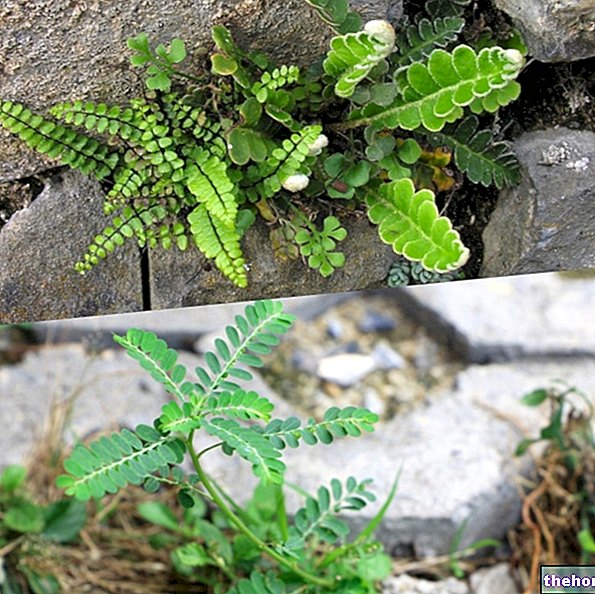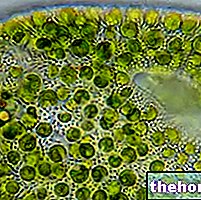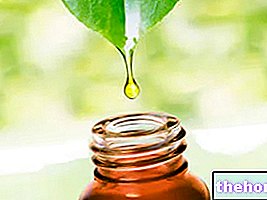To treat constipation and dyspepsia, herbal medicine offers many formulations, in this article we will present two product examples: chewable tablets and solution.
(senna), useful for counteracting constipation, an "eupeptic-digestive action rendered by other plants.Natural treatment shouldn't last more than three to four days. If the problem persists over time, even after treatment, you should consult your doctor. However, it should be noted that the doctor should be contacted for advice even before resorting to the use of natural remedies against constipation and dyspepsia, in order to identify any contraindications to the use of similar products.
This product, although a natural remedy, must not be taken during pregnancy and breastfeeding; moreover, those who take drugs should avoid the concomitant use of drastic drugs with a laxative effect, because they alter the physiology of the intestine, hindering the absorption of the drug.
When administering this natural product, it would be a good idea to drink plenty of water, at least two glasses, to help drugs perform their effect.
- Fennel: (Foeniculum vulgare) stimulates biliary activity and has carminative action. For this reason, fennel is used against dyspepsia and reduces abdominal swelling. It is also a diuretic. The phytocomplex is characterized by phencone and anethole, belonging to the category of mono and sesquiterpenes.
- Dandelion (Taraxacum officinale) is a diuretic and digestive drug, characterized by organic acids, lactone sesquiterpenes and phenyl propanes which stimulate glomerular activity and tone the liver and pancreas.
- Caraway or caraway (Carum carvi) is a drug with a strong flavor that recalls anise. Its medicinal properties help digestion and reduce bloating. Moreover, thanks to the essential oil made up of very volatile molecules, such as limonene and carvone, caraway can be used as a disinfectant intestinal (antiseptic properties). Finally, this drug also has choleretic and cholagogue properties (it stimulates biliary activity).
- Boldo (Peumus boldus): rich in alkaloids, stimulates and promotes digestive function. It is also useful in liver disorders.
- Cassia (Cassia angustifolia): anthraquinone drug, namely hydroxyanthracenic heterosides and sennoside B; it is rich in simple sugars such as glucose and fructose; at the intestinal level it stimulates peristalsis favoring the advancement of the stool with a purgative effect.
Update: New European Regulation of 18 March 2021
On April 8, 2021, the ban on marketing foods and food supplements containing hydroxyanthracenes and their derivatives, a family of molecules contained in various plants, such as aloe, cassia, rhubarb and senna, came into force.
More in detail, the new European Regulation of March 18, 2021 - which came into force, precisely, April 8, 2021 - modifies Annex III of Regulation (EC) No. 1925/2006 of the European Parliament and of the Council to as regards the botanical species containing hydroxyanthracene derivatives.
The full text can be consulted by clicking here. However, we can summarize the main points as follows:
- The following are added to the list of substances whose use in food is prohibited (Annex III part A of the aforementioned regulation):
- Aloe-emodin and all preparations in which this substance is present;
- Emodin and all preparations in which this substance is present;
- Preparations based on leaves of Aloe species containing hydroxyanthracene derivatives;
- Dantrone and all preparations in which this substance is present.
- The following are added to the list of substances whose use in food is subject to Community surveillance (Annex III part C):
- Preparations based on the root or rhizome of Rheum palmatum L., Rheum officinale Baillon and their hybrids containing hydroxyanthracene derivatives;
- Preparations based on leaves or fruits of Cassia senna L. containing derivatives of hydroxyanthracene;
- Preparations based on bark of Rhamnus frangula L. o Rhamnus purshiana A.D. containing derivatives of hydroxyanthracene.
- Tamarind (Tamarindus indicates) it's cool (Ficus carica) represent two drugs that perform the same function: they act as osmotic laxatives by attracting water into the intestine and causing the formation of soft stools. Tamarind consists mainly of organic acids (tartaric, citric, malic, succinic, lactic and oxalic). A low doses serves to regularize the intestine; if it is taken in large quantities, however, it determines a laxative effect. The osmotic action of the fig is made by the simple sugars it contains.
- Prune (Prunus domestica): the plum boasts osmotic and volume laxative properties, conferred by the presence of fibers and simple sugars. Furthermore, by stimulating the secretion of stomach acid juices, it tones the gastric function.
- Sweet almond oil (Prunus dulcis) is included in the herbal formulation for its lubricating effect, which helps to regulate the frequency of bowel movements without affecting the intestinal physiology.
- Ginger or ginger (Zingiber officinale): it is a root exploited for its carminative and digestive action.
The herbalist or the expert will have to recommend the most suitable product for the client's needs, clarifying the possible side effects that could result. For example, neither of the two formulations should be taken if dyspepsia is also related to heartburn: the active ingredients that make up the plants could, in this case, aggravate heartburn. In this regard, therefore, the patient should first exhibit all the symptoms, so that the herbalist, consequently, can choose the most suitable natural remedy to solve his constipation and dyspepsia problems.
Select plant Fir Acacia Acerola Sorrel Yarrow Yarrow Yarrow Aconito Adatoda Garlic Agnocasto Agrimonia Alchemilla Alkekengi Aloe Altea Witch Hazel Ammi or Visnaga Pineapple Andrographis Anemone Pulsatilla Angelica Anise Star Anise Japanese Star Anise Bitter Orange Bitter Areca Arnica Harpagophytum Arpagophyte Artemisia Asteragus Basil Asparagus Asparagus Peruvian Asparagus Asparagus Asparagus Hawthorn Boldo Borage Shepherd's Purse Boswellia Bucco Butea superba Cocoa Coffee Cajeput Calamus Calamus Marigold Camedrio Chamomile Roman Chamomile Camphor Cinnamon Ceylon Maidenhair Capuchin Artichoke Cardamom Cardiac Thistle Asian Thistle Carvi Cascara Cassia Catecu Catha Cabbage Celandine Chicory Centaurea Cinnamon Cypress Celandine Chives Cypress Coca Cola Colchico Combreto Condurango Comfrey Coriander Cranberry Barberry American Chrysanthemum Cumin Turmeric Damiana Digital Dioscorea Drosera Dulcamara Dunalilella Echinacea Eder a Ephedra Elenio Eleutherococcus Helichrysum Evening primrose Horsetail Alfalfa Erica Euphrasia Erisimo Escolzia Eucalyptus Farfara Farfaraccio Calabar bean Fenugreek Fennel Phytolacca Frangola Ash Fumaria Japanese Mushrooms Galega Ganoderma lucidum Garcinia Cambogia Mulberry Gentian Broom Ginkgo Ginkgo Guipana Guipana Gynestra Ginkgo Hibelia Gymnasium Hibiscus Guarulp St. John's Wort Horse Chestnut Ispaghul Hyssop Jaborandi Kava kava Konjac Laminaria Cherry Laurel Lavender Lemongrass Lespedeza Lovage Icelandic Lichen Lemon Flax Lippia Licorice Lobelia Hops Maca Marjoram Maize Mallow Manna Marrubio Marrubio d "water Matè Melaleuca Meliloto American Lemon balm Myrtle Myrama Walnut Nutmeg Walnut vomica Olive tree Meadowsweet Ononide Opuntia Oregano Orthosiphon Nettle Poppy Papaya Parietaria Feverfew Passiflora Chilli Perilla Periwinkle Phyllanthus Plantain Picrorhiza Pilosella Pino Pisci dia Podofillo Polygala Grapefruit Parsley Psyllium Pueraria mirifica Butcher's broom Pygeum Quassia Oak Rhubarb Ratania Rauwolfia currant Castor bean Rhodiola Rosehip Rosemary Rue Willow Sarsaparilla Sage Elderberry Sassafras Sedum Ergot Senna Serenoa Repens Soybean Solidago Tansy Taraxus Tamarind Tamarind Tamarind Tamarind Tamarindo Ursina Valerian Vanilla Mullein Verbena Veronica Viburnum Vinca Pansy Mistletoe Vine Withania Yohimbe Saffron Ginger Pumpkin Select disease Juvenile Acne Rosacea Tinnitus Tinnitus Aerophagia Tendon Affections Afonia Aphthae Algias Functional Halitosis Breastfeeding Allergy Anemia Anguish Anxiety Arteriosclerosis Asthrosis Asthrosis Arthritis Arthritis Men Sex Woman Blepharitis and Conjunctivitis Eye bags Bronchitis Gallstones Kidney stones Salivary stones Baldness Androgenetic Candida Fragile hair Caries Headache Cellulitis Motion sickness Cystitis C limaterio Cholecystopathy High cholesterol Ulcerative colitis Colonoscopy Contusions Hematoma Convalescence Couperose Depression Dermatitis Diaper dermatitis Diabetes Diarrhea Erectile dysfunction Dyslipidemia Dysmenorrhea Dyspepsia Disturbances of vision Hemorrhoids Epistaxis Herethism Heart disease Fever Fibromyalgia Gastro-intestinal disease Flatulence Hypertension Fibromyalgia Gastrointomnia Jaundice Laryngitis Renal lithiasis Toothache Sore throat Thinness Menopause Meteorism Mononucleosis Alzheimer's disease Crohn's disease Nausea Vomiting Obesity Dark circles Onychomycosis Osteoporosis Dry skin Periarthritis Piorea Low pressure Prostatitis Psoriasis Colds Breast fissures Anal fissures Gastro-nasal rhinitis Senescence Premenstrual Syndrome Sinusitis Quit smoking Overweight Fatty liver Constipation Stomatitis Stress Cough Triglycerides high Ulcer Burns Nails Brittle flashes Heat Warts Dizziness Properties herbal Tanning Abortive adaptogenic Aphrodisiac bittering analgesic anesthetic anorectics analgesic antacid anti-allergic anti-asthmatic Antibiotic catarrh Anticellulitiche anticonvulsant Antidiaforetiche antidiarrheal edematous anthelmintic antiemetic Antiemorroidarie antiphlogistic Antiidrotiche Antinevrotiche Antioxidants antipyretic antirheumatic antiscorbutic Antiseptic antispasmodic anti-uric Aperitive Flavoring Astringent Balsamic Bechiche Capillarotrope Cardiotonic Carminative Cathartic Caustics Healing Cholagogues Choleretic Dyes Decongestants Deodorants Purifying Diaphoretic Cleansers Disinfectants Detoxifiers Thirst quenching Diuretics Exciting Emetics Emmenagogues Emollients Hemostatic Energies Hepatoprotectors Expectorants Eupepticus Moisturisers Galactosensitizers lanti Hypertensive Hypnotic Hypoglycemic Hypotensive Irritants Laxatives Soothing Narcotic Nerves Nutrients Odontalgic Pectoral Purgative Revulsive Remineralizing Refreshing Rubefacient Scialagoghe Sedative Soporifugas Sneezing Stomachic Stomatics Narcotic Vascular Tightenitis




























